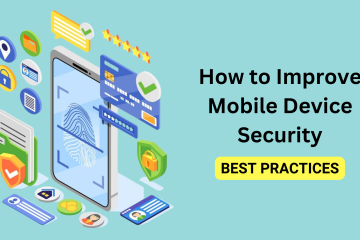This article discusses the three success keys top software development companies in Delhi use in mobile application design and development.
An entrepreneur without technical expertise may find the mobile application design phase vague and confusing, triggering a lot of questions. As a leading custom software development in Delhi, DI Infotech answers the frequently asked questions of businesses and explains the three success keys behind the mobile application design stages.
Business Analysis – Determining the Course of the App Development
Your hired software development company in Delhi will define the target development platform, such as iOS, Android, or both, by analyzing the market, niche users, platform preferences, demography, geography, income, and competition.
Once the platform(s) is defined, you must determine the development method and functional requirements.

There are three development approaches. They include Native, Hybrid, and Cross-platform Development.
Native app development: UX and UI are custom-made to match the standard guidelines of a platform. The app will look and feel like any factory app for that platform. It generates a high cost of implementation but offers greater user satisfaction.
Hybrid app development: Combines UX and UI elements of both native app and web app. UI and UX designs are identical across all platforms. Due to faster build time, the cost is much lowerthan native app development.
Cross-platform development: Helps you build a single app compatible across all platforms, such as iOS, Windows, and Android. Cheaper than native app development but pricier than the hybrid approach.
The functional requirements form the core objective of the app development, as they help you build the app concept and chart out its functions and tasks. This is documented in the project specifications and acts as a guide for UX designers.
The decisions you make at this point will set the course of your mobile application design and development. It is essential to complete this stage with a professional business analyst from a reputed custom software development company in Delhi.
UX Design: Creating the Design Wireframe
Once you have defined the functional requirements of your application, your hired sTop software companies in Delhi will start creating the app’s user experience (UX) design.
Here, the design expert creates fictional personas (users) and user scenarios with the application (app interaction). Depending upon the application and its functionality, it might require at least five user personas and two app interaction scenarios for each user.
The aim of this task is to help the customer development company in Delhi understand the ultimate goal of the application and what different users may want to achieve through it.
By understanding this, the designer can create a detailed wireframe to show the flow of interaction between the app and its users. Depending on the work order and budget, the wireframe can be digitally created or hand drawn.
Many rounds of mockups and rigorous testing, and continuous feedback ultimately lead the UX designer to create the final wireframe.
The final wireframe, which usually looks like monochromatic schemes, forms the reference point for the UI designers.
Top software companies in Delhi, like DI Infotech, highly recommend businesses not to skip this part and take part in the process to see the results upfront. It is because making adjustments, fixing design issues, and eliminating errors in wireframes are much cheaper than changing the application codes.
UI Design: Transform Wireframes into Prototypes
The UI designer from your chosen software development company in Delhi will start working on the prototype once the wireframe is ready.
By taking inspiration from the UX designer’s wireframe, the UI expert combines the target platform’s guidelines, the latest mobile application design trends, and the company’s brand book (colours, font, idea, etc.) to convert the wireframes into an HD-quality, colourful prototype.
For instance, if the brand already has a web application fulfilling the same purpose, the UI designer will make sure the mobile application looks familiar and consistent with that of the website.
Once the prototype is reviewed, and changes are implemented, the project manager will approve the final version for app development.
If you have any questions regarding your mobile application design, don’t hesitate to reach out to us for a quick consultation. We are one of the Top software companies in Delhi for custom mobile application design and development.
We’d be happy to help.



0 Comments